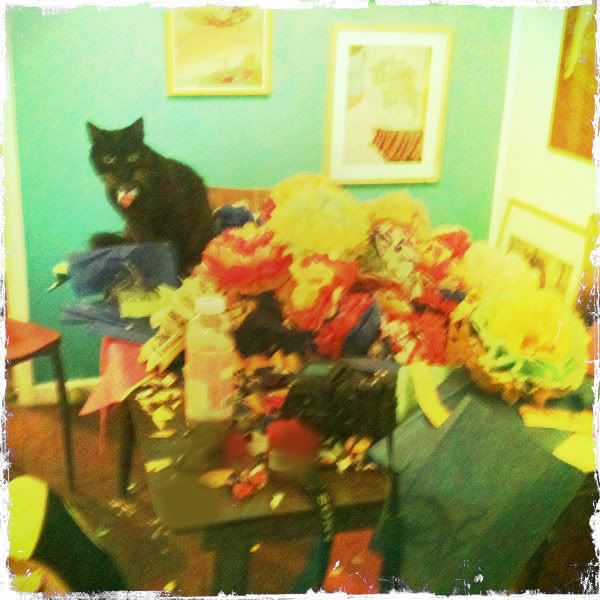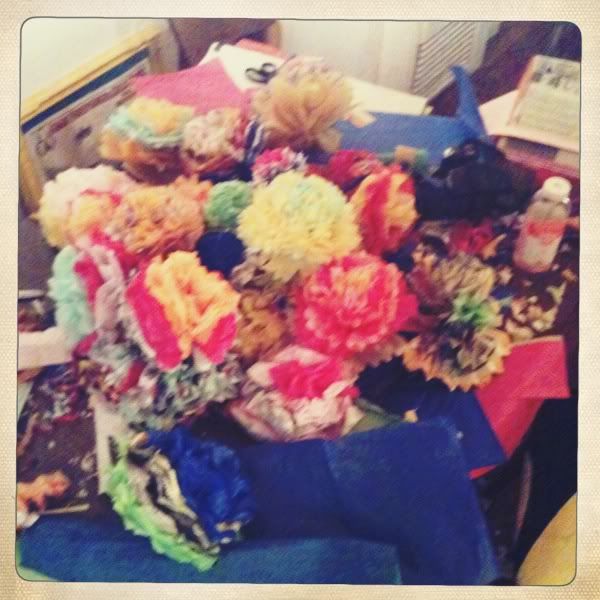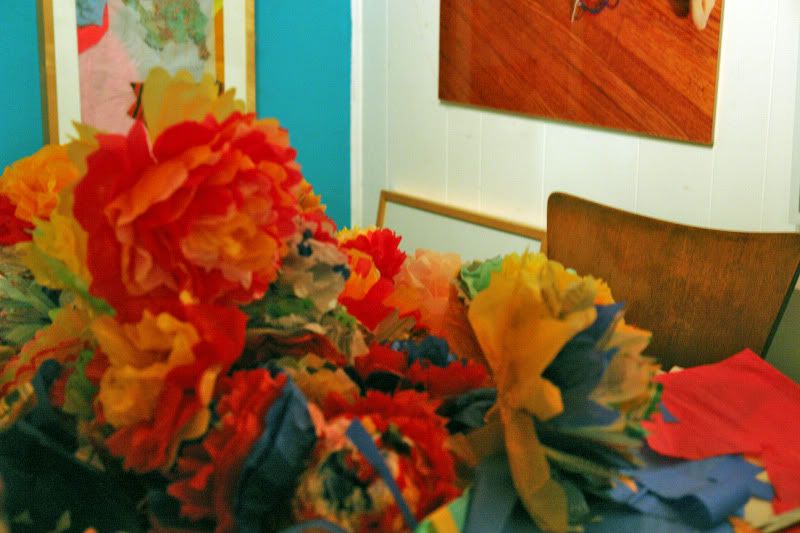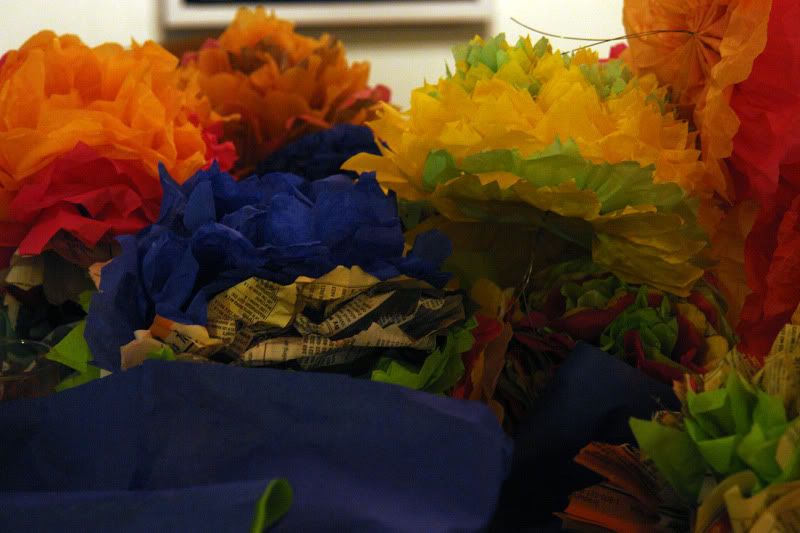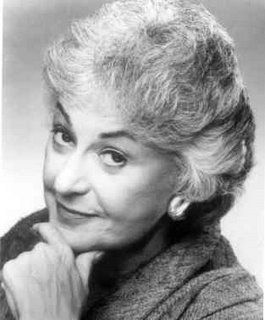Day of the Dead (
Spanish:
Día de los Muertos) is a
holiday celebrated in
Mexico and by
Mexican Americans living in the
United States and
Canada. The holiday focuses on gatherings of family and friends to pray for and remember friends and family members who have died. The celebration occurs on November 2 in connection with the
Catholic holidays of
All Saints' Day (November 1) and
All Souls' Day (November 2). Traditions connected with the holiday include building private altars honoring the deceased using
sugar skulls, marigolds, and the favorite foods and beverages of the departed and visiting graves with these as gifts. Due to occurring shortly after
Halloween, the Day of the Dead is sometimes thought to be a similar holiday, although the two actually have little in common. The Day of the Dead is a time of celebration, where partying is common.
Scholars trace the origins of the modern holiday to indigenous observances dating back thousands of years and to an
Aztec festival dedicated to a
goddess called
Mictecacihuatl. In
Brazil,
Dia de Finados is a public holiday that many Brazilians celebrate by visiting cemeteries and churches. In
Spain, there are festivals and parades, and, at the end of the day, people gather at cemeteries and pray for their dead loved ones. Similar observances occur elsewhere in Europe and in the
Philippines, and
similarly themed celebrations appear in many
Asian and
African cultures.
Origins
The Day of the Dead celebrations in
Mexico can be traced back to the indigenous cultures. Rituals celebrating the deaths of
ancestors have been observed by these civilizations perhaps for as long as 2,500–3,000 years.
[1] In the pre-Hispanic era, it was common to keep skulls as trophies and display them during the rituals to symbolize death and rebirth.
The festival that became the modern Day of the Dead fell in the ninth month of the
Aztec calendar, about the beginning of August, and was celebrated for an entire month. The festivities were dedicated to the god
[2] known as the "Lady of the Dead", corresponding to the modern
Catrina.
In most regions of Mexico, November 1 honors children and infants, whereas deceased adults are honored on November 2. This is indicated by generally referring to November 1 mainly as
Día de los Inocentes ("Day of the Innocents") but also as
Día de los Angelitos ("Day of the Little Angels") and November 2 as
Día de los Muertos or
Día de los Difuntos ("Day of the Dead").
[3]Beliefs
People go to cemeteries to with the souls of the departed and build private altars containing the favorite foods and beverages as well as photos and memorabilia of the departed. The intent is to encourage visits by the souls, so that the souls will hear the prayers and the comments of the living directed to them. Celebrations can take a humorous tone, as celebrants remember funny events and anecdotes about the departed.
[3]Plans for the day are made throughout the year, including gathering the goods to be offered to the dead. During the three-day period, families usually clean and decorate graves;
[2] most visit the cemeteries where their loved ones are buried and decorate their graves with
ofrendas ("offerings"), which often include orange
mexican marigolds (
Tagetes erecta) called
cempasúchitl (originally named
cempoalxochitl,
Nahuatl for "twenty flowers").
In modern Mexico, this name is sometimes replaced with the term
Flor de Muerto ("Flower of the Dead"). These flowers are thought to attract
souls of the dead to the offerings.

Catrinas, one of the most popular figures of the Day of the Dead celebrations in Mexico
Toys are brought for dead children (
los angelitos, or "the little angels"), and bottles of
tequila,
mezcal or
pulque or jars of
atole for adults. Families will also offer trinkets or the deceased's favorite candies on the grave.
Ofrendas are also put in homes, usually with foods such as candied pumpkin,
pan de muerto ("bread of the dead"), and sugar skulls and beverages such as atole. The
ofrendas are left out in the homes as a welcoming gesture for the deceased.
[2] Some people believe the spirits of the dead eat the "spiritual essence" of the
ofrendas food, so even though the celebrators eat the food after the festivities, they believe it lacks nutritional value. Pillows and blankets are left out so that the deceased can rest after their long journey. In some parts of Mexico, such as the towns of
Mixquic,
Pátzcuaro and
Janitzio, people spend all night beside the graves of their relatives. In many places, people have picnics at the grave site as well.
Some families build
altars or small
shrines in their homes;
[2] these usually have the
Christian cross, statues or pictures of the
Blessed Virgin Mary, pictures of deceased relatives and other persons, scores of candles and an
ofrenda. Traditionally, families spend some time around the altar, praying and telling anecdotes about the deceased. In some locations, celebrants wear shells on their clothing, so that when they dance, the noise will wake up the dead; some will also dress up as the deceased.
Public schools at all levels build altars with ofrendas, usually omitting the religious symbols. Government offices usually have at least a small altar, as this holiday is seen as important to the Mexican heritage.
Those with a distinctive talent for writing sometimes create short poems, called
calaveras ("skulls"), mocking
epitaphs of friends, describing interesting habits and attitudes or funny anecdotes. This custom originated in the 18th or 19th century, after a newspaper published a poem narrating a dream of a cemetery in the future, "and all of us were dead", proceeding to "read" the tombstones.
Newspapers dedicate
calaveras to public figures, with
cartoons of
skeletons in the style of the famous
calaveras of
José Guadalupe Posada, a Mexican illustrator.
Theatrical presentations of
Don Juan Tenorio by
José Zorrilla (1817–1893) are also traditional on this day.
A common
symbol of the holiday is the skull (colloquially called
calavera), which celebrants represent in
masks, called
calacas (colloquial term for "skeleton"), and foods such as sugar or chocolate skulls, which are inscribed with the name of the recipient on the forehead. Sugar skulls are gifts that can be given to both the living and the dead. Other holiday foods include
pan de muerto, a sweet
egg bread made in various shapes from plain rounds to skulls and
rabbits, often decorated with white frosting to look like twisted bones.
José Guadalupe Posada created a famous print of a figure that he called
La Calavera de la Catrina ("
calavera of the female dandy") as a parody of a Mexican upper-class female. Posada's striking image of a costumed female with a skeleton face has become associated with the Day of the Dead, and
Catrina figures often are a prominent part of modern Day of the Dead observances.
The traditions and activities that take place in celebration of the Day of the Dead are not universal and often vary from town to town. For example, in the town of
Pátzcuaro on the
Lago de Pátzcuaro in
Michoacán, the tradition is very different if the deceased is a child rather than an adult. On November 1 of the year after a child's death, the
godparents set a table in the parents' home with sweets, fruits,
pan de muerto, a cross, a rosary (used to ask the Virgin Mary to pray for them) and candles. This is meant to celebrate the child's life, in respect and appreciation for the parents. There is also dancing with colorful costumes, often with skull-shaped masks and devil masks in the plaza or garden of the town. At midnight on November 2, the people light candles and ride winged boats called
mariposas (Spanish for "butterflies") to Janitzio, an island in the middle of the lake where there is a cemetery, to honor and celebrate the lives of the dead there.
In contrast, the town of
Ocotepec, north of
Cuernavaca in the State of
Morelos, opens its doors to visitors in exchange for
veladoras (small wax candles) to show respect for the recently deceased. In return, the visitors receive
tamales and
atole. This is only done by the owners of the house where somebody in the household has died in the previous year. Many people of the surrounding areas arrive early to eat for free and enjoy the elaborate altars set up to receive the visitors from Mictlán.
In some parts of the country (especially the cities, where in recent years there are displaced other customs), children in costumes roam the streets, knocking on people's doors for a
calaverita, a small gift of candies or money; they also ask passersby for it. This custom is similar to that of
Halloween's
trick-or-treating and is relatively recent.
Some people believe that possessing Day of the Dead items can bring good luck. Many people get tattoos or have dolls of the dead to carry with them. They also clean their houses and prepare the favorite dishes of their deceased loved ones to place upon their altar or ofrenda.
Observances outside Mexico
United States
In many American communities with Mexican populations, Day of the Dead celebrations are held that are very similar to those held in Mexico. In some of these communities, such as in
Texas[4] and
Arizona,
[5] the celebrations tend to be mostly traditional. For example, the All Souls' Procession has been an annual
Tucson event since 1990. The event combines elements of traditional Day of the Dead celebrations with those of pagan harvest festivals. People wearing masks carry signs honoring the dead and an urn in which people can place slips of paper with prayers on them to be burned.
[6]In other communities, interactions between Mexican traditions and American culture are resulting in celebrations in which Mexican traditions are being extended to make artistic or sometimes political statements. For example, in
Los Angeles, California, the
Self Help Graphics & Art Mexican-American cultural center presents an annual Day of the Dead celebration that includes both traditional and political elements, such as altars to honor the victims of the
Iraq War highlighting the high casualty rate among Latino soldiers. An updated, inter-cultural version of the Day of the Dead is also evolving at a cemetery near
Hollywood.
[7] There, in a mixture of Mexican traditions and Hollywood hip, conventional altars are set up side-by-side with altars to
Jayne Mansfield and
Johnny Ramone. Colorful native dancers and music intermix with
performance artists, while sly
pranksters play on traditional themes.
Similar traditional and inter-cultural updating of Mexican celebrations is occurring in
San Francisco, for example, through the
Galería de la Raza, SomArts Cultural Center, Mission Cultural Center,
de Young Museum and
Garfield Square. Oakland is home to Corazon Del Pueblo in the Fruitvale district. Corazon Del Pueblo has a shop offering handcrafted Mexican gifts and a museum devoted to Day of the Dead artifacts.
[8] In
Missoula, Montana, skeletal celebrants on stilts, novelty bicycles, and skis parade through town.
[9] It also occurs annually at historic Forest Hills Cemetery in Boston's Jamaica Plain neighborhood. Sponsored by Forest Hills Educational Trust and the folkloric performance group La Piñata, the Day of the Dead celebration celebrates the cycle of life and death. People bring offerings of flowers, photos, mementos, and food for their departed loved ones, which they place at an elaborately and colorfully decorated altar. A program of traditional music and dance also accompanies the community event.
Latin America
Guatemalan celebrations of the Day of the Dead are highlighted by the construction and flying of giant kites
[10] in addition to the traditional visits to grave sites of ancestors. A big event also is the consumption of
fiambre, which is made only for this day during the year.
In
Ecuador, the Day of the Dead is observed to some extent by all parts of society, though it is especially important to the indigenous
Kichwa peoples who make up an estimated quarter of the population.
Indigena families gather together in the community cemetery with offerings of food for a day-long remembrance of their ancestors and lost loved ones. Ceremonial foods include
colada morada, a spiced fruit porridge that derives its deep purple color from the
Andean blackberry and purple maize. This is typically consumed with
guagua de pan, a bread shaped like a swaddled infant, though variations include horses and pigs—the latter being traditional to the city of
Loja. The bread, which is wheat flour-based today but was made with cornmeal in the
pre-Columbian era, can be made savory with cheese inside or sweet with a filling of
guava paste. These traditions have permeated into mainstream society as well, where food establishments add both
colada morada and
gaugua de pan to their menus for the season. Many non-indigenous Ecuadorians partake in visiting the graves of the deceased and preparing the traditional foods as well.
The
Brazilian public holiday of
Finados (Day of the Dead) is celebrated on November 2. Similar to other Day of the Dead celebrations, people go to cemeteries and churches with flowers, candles, and prayer. The celebration is intended to be positive to celebrate those who are deceased.
In
Haiti,
voodoo traditions mix with
Roman Catholic Day of the Dead observances as, for example, loud drums and music are played at all-night celebrations at cemeteries to waken
Baron Samedi, the Loa of the dead, and his mischievous family of offspring, the Gede.
Dia de los ñatitas ("Day of the Skulls") is a festival celebrated in
La Paz,
Bolivia, on November 9. In
pre-Columbian times, indigenous Andeans had a tradition of sharing a day with the bones of their ancestors on the third year after burial; however, only the skulls are used today. Traditionally, the skull of one or more family members are kept at home to watch over the family and protect them during the year. On November 9, the family crowns the skull with fresh flowers, sometimes also dressing it up in various garments, and makes offerings of cigarettes, coca leaves, alcohol, and various other items in thanks for the year's protection. The skulls are also sometimes taken to the central cemetery in La Paz for a special Mass and blessing.
[11][12][13] Europe
In many countries with a Roman Catholic heritage,
All Saints Day and
All Souls Day have long been holidays in which people take the day off work, go to cemeteries with candles and flowers, and give presents to children, usually sweets and toys.
[14] In
Portugal and Spain,
ofrendas ("offerings") are made on this day. In Spain, the play
Don Juan Tenorio is traditionally performed. In Spain, Portugal,
Italy,
Belgium, the
Netherlands,
France and
Ireland, people bring flowers to the graves of dead relatives and say prayers over the dead. In
Poland,
[15] Slovakia,
[16] Hungary,
[17] Lithuania,
[18] Croatia,
[19] Slovenia,
[20] Romania,
[21] Austria,
Germany,
Sweden,
Norway and
Finland, the tradition is to light candles and visit the graves of deceased relatives. In
Tyrol, cakes are left for them on the table, and the room kept warm for their comfort. In
Brittany, people flock to the cemeteries at nightfall to kneel, bareheaded, at the graves of their loved ones and to anoint the hollow of the
tombstone with
holy water or to pour libations of
milk on it. At bedtime, the supper is left on the table for the souls.
[22]A Mexican-style Day of the Dead has been celebrated in
Prague, Czech Republic, as part of a promotion by the Mexican embassy. Local citizens join in a celebration of the Day of the Dead put on by a theatre group with masks, candles, and sugar skulls.
[23]Asia and Oceania

Flowers, including Mexican marigolds, used in the celebration of the Day of the Dead
In the Philippines, the holiday is
Araw ng mga Patay ("Day of the Dead"),
Todos Los Santos or
Undas (the latter two due to the fact that this holiday is celebrated on November 1, All Saints Day) and has more of a "family reunion" atmosphere.
[24] Tombs are cleaned or repainted, candles are lit, and flowers are offered. Entire families camp in cemeteries and sometimes spend a night or two near their relatives' tombs. Card games, eating, drinking, singing and dancing are common activities in the cemetery. It is considered a very important holiday by many Filipinos (after
Christmas and
Holy Week), and additional days are normally given as special non-working holidays (but only November 1 is a regular holiday).
Mexican-style Day of the Dead celebrations can also be found in
Wellington, New Zealand, complete with altars celebrating the deceased with flowers and gifts.
[25]Other similar traditions
Many other cultures around the world have similar traditions of a day set aside to visit the graves of deceased family members. Often included in these traditions are celebrations, food and beverages, in addition to prayers and remembrances of the departed.
The
Bon Festival (O-bon
(お盆?) or only Bon
(盆?) is a
Japanese Buddhist holiday to honor the departed
spirits of one's
ancestors. This Buddhist festival has evolved into a
family reunion holiday during which people from the big cities return to their hometowns and visit and clean their ancestors' graves. Traditionally including a
dance festival, it has existed in Japan for more than 500 years. This holiday is three days in August.
In
Korea,
Chuseok (추석, 秋夕) is a major traditional holiday, also called Hangawi. People go where the spirits of one's ancestors are enshrined and perform
ancestral worship rituals early in the morning; they visit the tombs of immediate ancestors to trim plants, clean the area around the tomb, and offer food, drink, and crops to their ancestors.
During the
Nepali holiday of
Gai Jatra ("Cow Pilgrimage"), every family who has lost a family member during the previous year makes a construction of bamboo branches, cloth, paper decorations and portraits of the deceased, called a
gai. Traditionally, a cow leads the spirits of the dead into the next land. Depending on local custom, either an actual live cow or a construct representing a cow may be used. The festival is also a time to dress up in costume, including costumes involving political comments and satire.
[26]In some cultures in
Africa, visits to the graves of ancestors, the leaving of food and gifts, and the asking of protection serve as important parts of traditional rituals. One example of this is the ritual that occurs just before the beginning of hunting season.
[27]In some tribes of the Amazon, they believe that the dead return as flowers rather than butterflies.
In popular culture
- Literature
- Film
- The film Once Upon a Time in Mexico, directed by Robert Rodriguez, takes place in the days leading up to the Day of the Dead, culminating in numerous acts of violence on the holiday itself.
- The Tim Burton film Corpse Bride (2005) shows a scene where town people are surprised to discover their deceased loved ones among calaca-like characters and thus take the opportunity to reunite again and have a family moment with the departed. This is reminiscent to similar beliefs that are the basis for the Mexican Day of the Dead celebration.
- The movie Assassins has a scene that takes place during a Day of the Dead procession crossing the streets of San Juan, but this is inaccurate since the procession is not celebrated in Puerto Rico.
- The film The Crow: City of Angels takes place in a fictionalized version of Los Angeles during the Day of the Dead celebration. Sugar skulls and tribute altars are referenced, and the film's climax takes place during a large Day of the Dead street party.
- Television
- The first episode of the Adult Swim series The Venture Bros., "Dia de Los Dangerous!", takes place on this day. Hank and Dean Venture purchase sombreros and sugar skulls, and then Hank describes the events to their father, who has just given a lecture to a very small audience, due in part to the holiday.
- The Nicktoons Network animated series El Tigre: The Adventures of Manny Rivera, has an episode dedicated to the Day of the Dead, "The Grave Escape," in which Manny and Frida, after ridiculing the celebration and eating Manny's ancestor's ofrendas, discover that Sartana of the Dead has summoned an army consisting of the dead that had been forgotten. During their fight with the enraged beings, the two are transported into the Land of the Dead, where they meet Manny's ancestors.
- Games
- The computer game Grim Fandango (1998) relies heavily on Day of the Dead imagery, with most characters resembling calaca-like figurines. The plot spans four consecutive years from one November 2nd to another.
- The computer game World of Warcraft added in 2009 an in-game event with the same name and similar unique items related to this celebration, only accessible between November 1 and 2.
- In the video game LittleBigPlanet, one of the arcs of the main storyline has a Day of the Dead theme. Oddly, this arc is set in South America rather than in Mexico.
via wikipedia - to view link go <a href="http://en.wikipedia.org/wiki/Day_of_the_Dead">here</a>.
